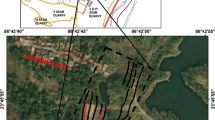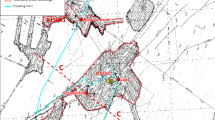
Overview
- Illustrates that mine seismology can improve underground safety standards
- Describes the apparent stress index concept history
- Presents a list of practical applications of stress index in combating rock burst hazard
- Explores the role of the seismologist, rock engineers, and mine management in the experiment's success
- Reviews the reasons why the seismic warning as such was discarded
- Includes supplementary material: sn.pub/extras
Access this book
Tax calculation will be finalised at checkout
Other ways to access
About this book
The presented experiment with seismic warning concept was a success because it was an internal mine project. Further, the Vaal Reefs management adopted the philosophy that the success rate should be measured in the preventive actions taken, not in the success of the prediction itself. Reviewing these and other aspects, the book clearly demonstrates how mine seismology can effectively improve underground safety standards.
Stefan Glazer’s book (…) addresses in a very comprehensive manner both technical and practical problems of implementing and then effectively using microseismic networks and data. (…) Stefan proves that through comprehensive microseismic data analysis the location of potential rock burst can be assessed and then prevention action plans can be developed, providing more confidence to management and workers that deposit[s] can be mine[d] safely.
Michal Stawski, VP Strategic Geomechanical Specialist, PT Freeport Indonesia
I began reading this story expecting to find a technical review of the science of seismology and its application in mining, [but] this book is much more than that. (…) This is a must-read for those managing seismically active mines and should provide a wake-up call to the industry as the complex morality surrounding the management of seismic risk needs to be clarified in order for this to advance.
Eric Strom, Director Underground Mining, New Gold Inc.
As a mining geotechnical practitioner having experience in large open pit and underground massive mining operations, I have learned that mining induced seismicity can have a significant impact on the safety and economics of operations. However, seismicity is a complex field that is generally left to specialists with little input from geotechnical engineers and engineering geologists. (…) This is a must read for mine seismologists, geotechnical practitioners and mining engineers alike, and will be a welcome and much needed addition to my own book cabinet. This will be [an] invaluable work as our industry progresses to the mining of new depths in both the underground and open pit environments.
Desmond Mossop Pr.Sci.Nat., Principal Engineering Geologist, SRK Consulting
Similar content being viewed by others
Keywords
Table of contents (6 chapters)
Authors and Affiliations
About the author
Bibliographic Information
Book Title: Mine Seismology: Seismic Warning Concept
Book Subtitle: Case Study from Vaal Reefs Gold Mine, South Africa
Authors: S.N. Glazer
DOI: https://doi.org/10.1007/978-3-319-62353-5
Publisher: Springer Cham
eBook Packages: Earth and Environmental Science, Earth and Environmental Science (R0)
Copyright Information: Springer International Publishing AG 2018
Hardcover ISBN: 978-3-319-62352-8Published: 18 October 2017
Softcover ISBN: 978-3-319-87298-8Published: 18 August 2018
eBook ISBN: 978-3-319-62353-5Published: 03 October 2017
Edition Number: 1
Number of Pages: XV, 201
Number of Illustrations: 9 b/w illustrations, 91 illustrations in colour
Topics: Geophysics/Geodesy, Civil Engineering, Geophysics and Environmental Physics, Geotechnical Engineering & Applied Earth Sciences, Natural Hazards



